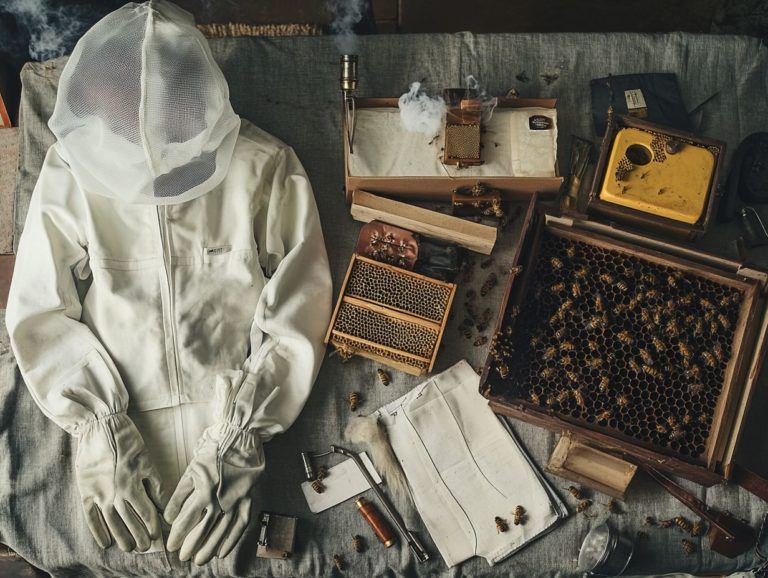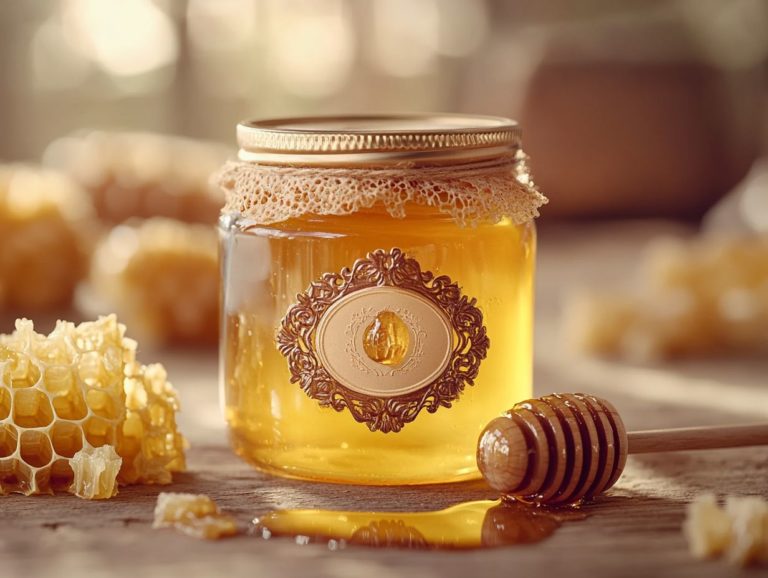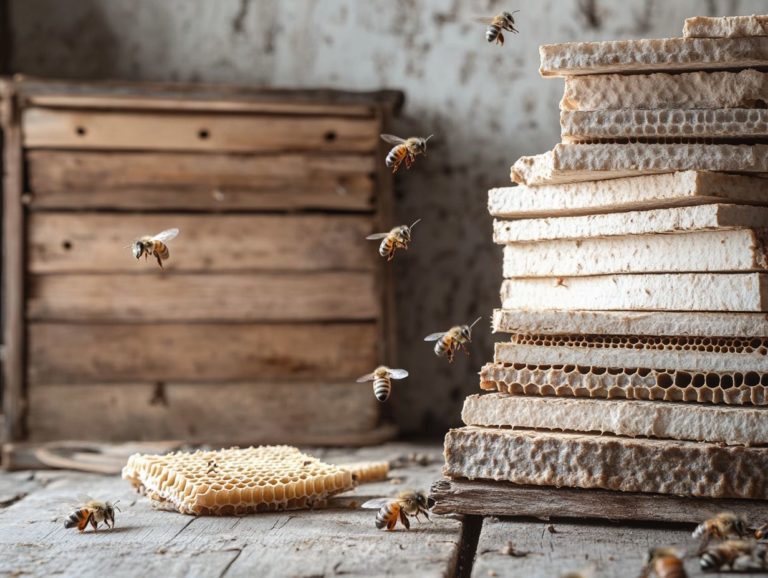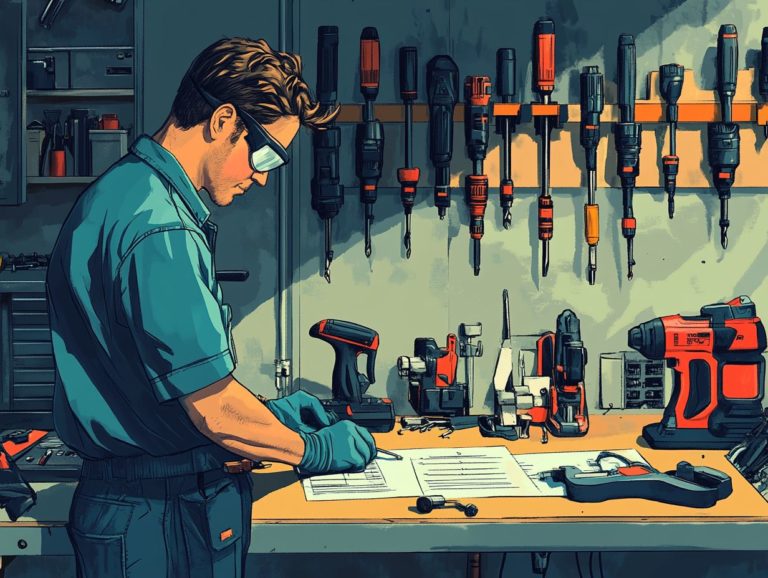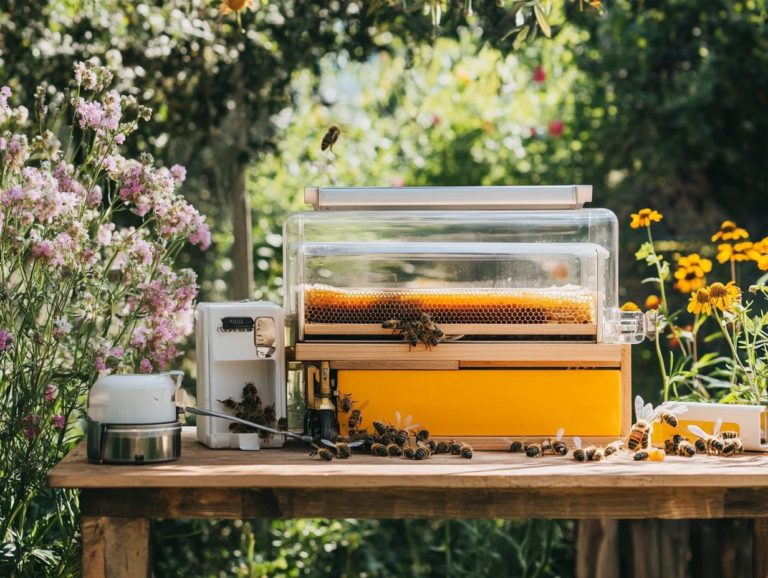Assessing the Cost of Beekeeping Equipment
Beekeeping is an incredibly rewarding endeavor that not only supports local ecosystems but also yields delicious honey and a variety of other products.
As you embark on this journey, it’s essential to equip yourself with the right tools and equipment. From grasping the essentials of various beekeeping tools to selecting the appropriate types of beehives and protective gear, having the right setup is vital for your success.
This guide will delve into the costs associated with beekeeping equipment, explore the factors that influence those costs, and offer strategies for managing your expenses while still ensuring quality.
With wise investments, you can pave the way for long-term savings and foster a thriving bee colony.
Contents
- Key Takeaways:
- The Importance of Proper Beekeeping Equipment
- The Cost of Beekeeping Equipment
- Additional Costs of Beekeeping
- Frequently Asked Questions
- What is the average cost of beekeeping equipment?
- What are the essential beekeeping equipment pieces that I need to purchase?
- Can I save money by purchasing used beekeeping equipment?
- Are there any alternative ways to reduce the cost of beekeeping equipment?
- How often do I need to replace my beekeeping equipment?
- Is beekeeping equipment a one-time investment?
Key Takeaways:
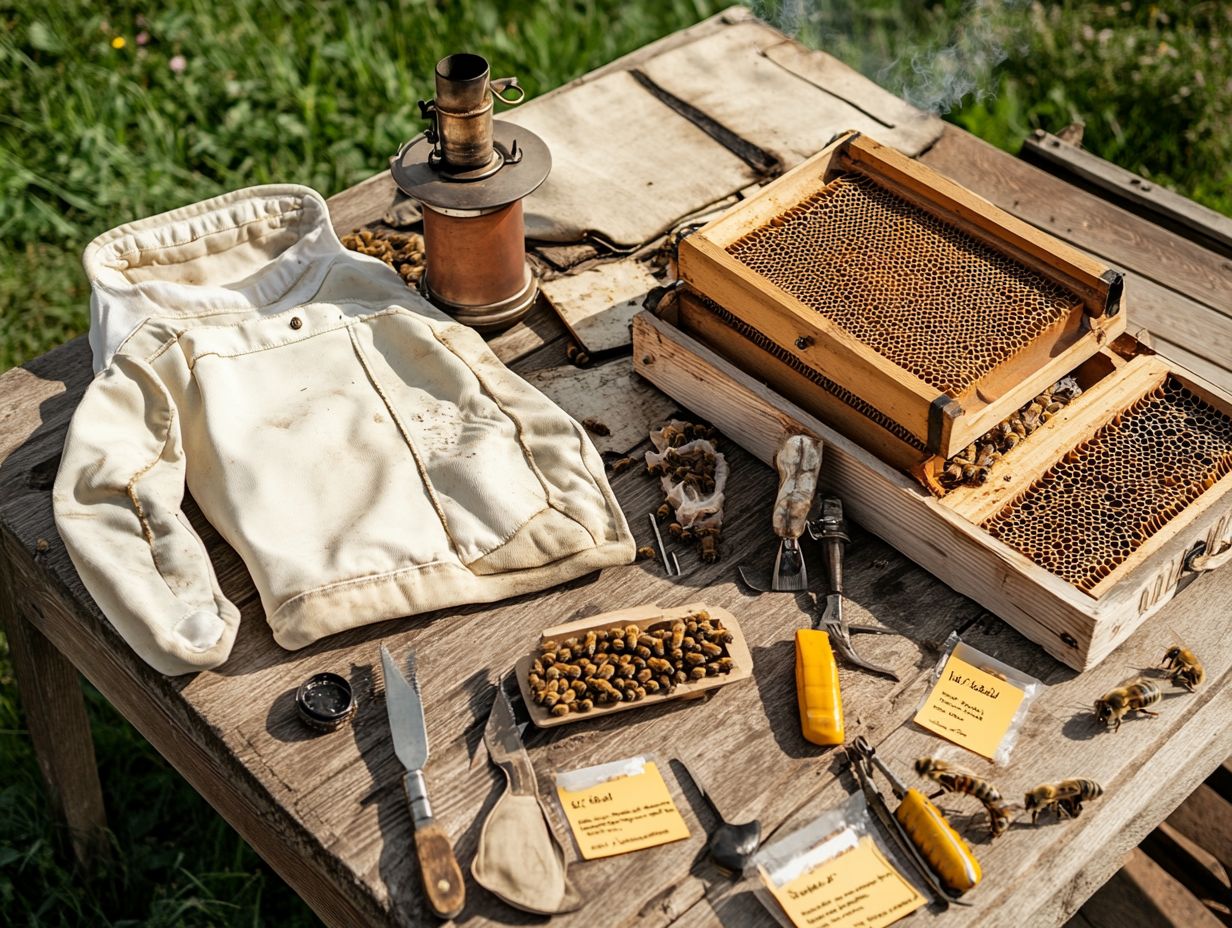
- Proper beekeeping equipment is crucial for the success and safety of beekeepers.
- The cost of beekeeping equipment can vary depending on factors such as type and quality, but there are ways to save money.
- Investing in quality beekeeping equipment may result in long-term savings and benefits.
The Importance of Proper Beekeeping Equipment
Choosing the right beekeeping equipment is your secret weapon for success! It directly impacts the health and productivity of your honey bee colonies. High-quality tools and protective gear can greatly enhance your efficiency, enabling you to handle hives safely and effectively.
Essential equipment includes:
- hive body
- frames
- honey supers
- protective gear like bee suits that shield you from stings while you work with your bees.
Important tools like the hive tool, smoker, and bottom board are essential for managing the colony, ensuring its health, and getting the most honey from your bees.
What are the Essential Tools for Beekeeping?
Essential tools for your beekeeping journey include a hive tool, smoker, and protective gear, each playing a crucial role in maintaining a healthy hive.
These tools are not just mere accessories; they are vital for establishing a harmonious relationship with the bees. Take the hive tool, for example it’s critical for prying apart frames sealed with beeswax or honey. This handy tool allows you to inspect the hive with minimal disturbance, ensuring your colony remains undisturbed.
The smoker is equally important; by emitting smoke, it calms the bees and reduces the risk of aggressive behavior, making your inspections and honey harvesting a much smoother experience.
As for protective gear, wearing a well-fitted bee suit and gloves is fundamental in preventing stings while you tend to the hive. Incorporating plastic frames can also streamline your honey harvesting process, as they are easier to manage and clean compared to traditional wooden frames.
By understanding and effectively utilizing each of these tools, you can create an environment that fosters the health and productivity of your colonies.
What are the Different Types of Beehives?
You ll encounter several types of beehives in the world of beekeeping, each tailored to specific needs and management styles. The Langstroth hive is the most common choice, renowned for its removable frames that make inspection and honey extraction a breeze. If you re looking for ample honey storage and proper ventilation for your colony, the Dadant super is another excellent option favored by many beekeepers.
If you prefer a more hands-off approach, consider the top-bar hive. It s celebrated for its simplicity and allows bees to naturally build their own wax combs, making it particularly appealing for those passionate about natural beekeeping. The Warre hive features a vertical design, enabling bees to regulate their internal environment, which some experts believe fosters healthier colonies.
Each hive type offers unique advantages that can significantly impact honey production. For instance, the efficiency of the Langstroth hive often results in higher yields compared to other designs. By thoughtfully selecting a hive type that aligns with your beekeeping goals, you can elevate your practices and ensure a flourishing bee population.
What are the Different Types of Protective Gear?
Protective gear in beekeeping is essential for ensuring your safety while managing hives, with bee suits being the most popular choice. The right protective gear not only shields you from stings but also empowers you to work confidently around your colonies.
Key components of your protective ensemble should include a well-fitted bee suit, gloves, and a veil to safeguard your face and neck. Investing in high-quality protective clothing can greatly enhance your beekeeping experience while minimizing the risk of bee-related injuries.
Bee suits can be made from various materials, including lightweight cotton and heavy-duty fabrics. Each offers different levels of protection and comfort depending on your work environment.
The fit of your suit matters just as much. Options with elastic cuffs, reinforced seams, and an adjustable waist ensure you can move freely without exposing yourself to those pesky stings.
For additional protective items, gloves made from thick leather or synthetic materials provide durability while still allowing for flexibility. Choosing a high-quality veil with fine mesh gives you visibility without sacrificing safety, contributing to a complete setup that keeps you safe and makes beekeeping enjoyable.
The Cost of Beekeeping Equipment
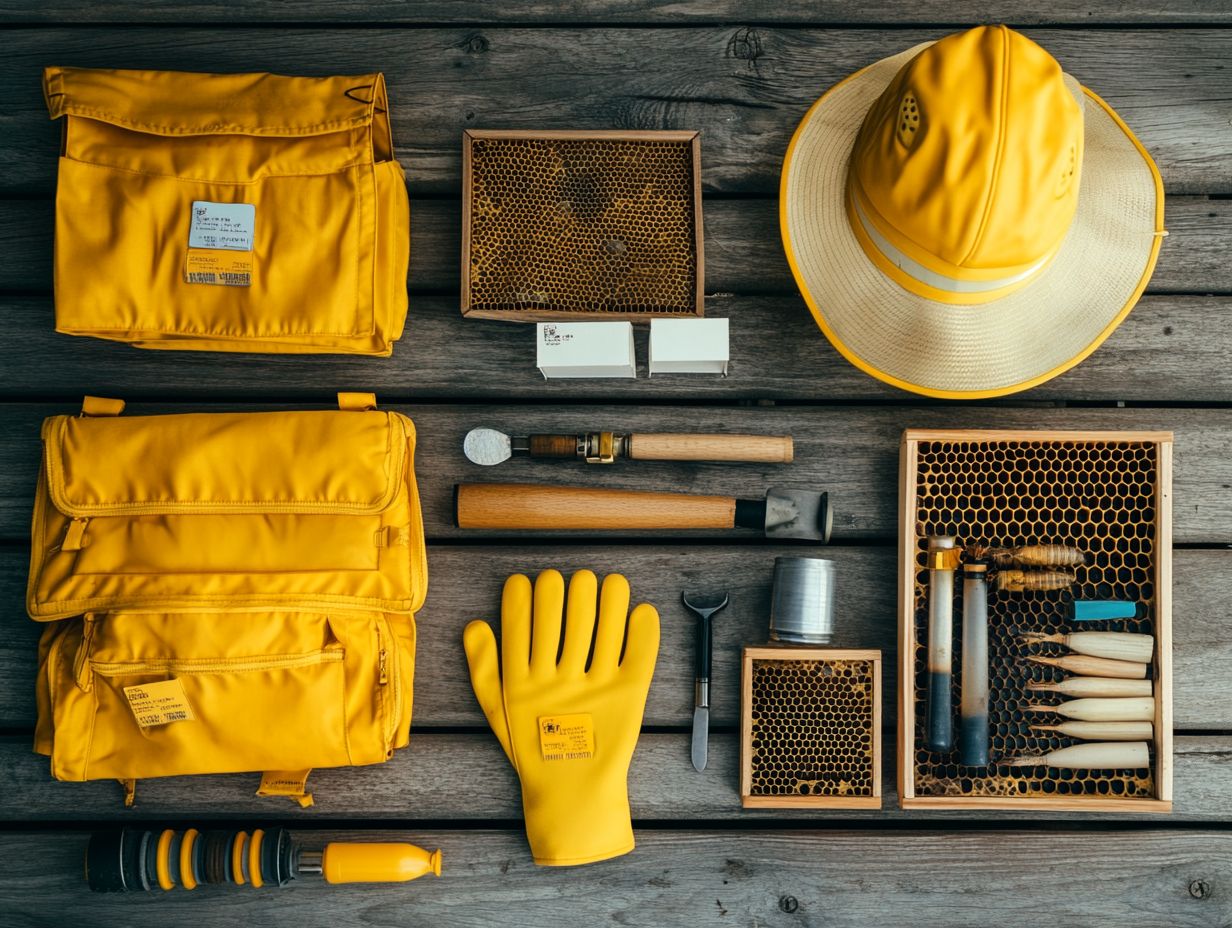
The costs of beekeeping equipment can vary significantly based on the type and quality of tools you need for effective hive management. Kick off your beekeeping adventure by investing smartly in essential tools like hives, a honey extractor, hive tools, and a smoker.
While the initial expenses may seem substantial, recognizing the value of each piece of equipment is vital for your budgeting and long-term sustainability. Remember to consider ongoing costs like maintenance and replacement of equipment, as these factors should play a role in your overall financial planning for your beekeeping activities.
How Much Does Basic Beekeeping Equipment Cost?
Basic beekeeping equipment costs can vary significantly, ranging from a few hundred to several thousand dollars, depending on the scale of your operation and the quality of the tools you choose. You’ll want to make sure you have key items like a hive tool, smoker, and honey extractor, all of which are essential for managing your hives and harvesting that sweet honey.
Typically, a complete starter kit will set you back between $200 to $600, depending on what s included think hives, frames, and protective gear. Understanding these costs is crucial for you as a prospective beekeeper, as it allows you to evaluate your investment and make informed choices about your equipment purchases.
The variety of beekeeping tools you encounter can significantly impact your overall costs. For instance, a basic hive tool might only cost you about $10 to $20, while an advanced honey extractor could range from $150 to over $1,000, depending on its capacity and design. Regarding protective clothing, quality options can start at $50 and climb higher based on materials and features.
Price tags are influenced by factors like brand reputation, durability, and specific functionalities that can elevate your beekeeping experience.
As you embark on the journey of shopping for essential beekeeping equipment, consider your budget thoughtfully. Explore second-hand tools and starter kits for budget-friendly options that don t compromise quality!
Start building your beekeeping kit today and get ready for a sweet adventure!
What Are the Factors That Affect the Cost of Beekeeping Equipment?
Several factors significantly influence the cost of beekeeping equipment, including the quality of materials, the reputation of the brand, and the specific tools you choose to purchase. You ll find that beekeeping equipment spans a wide spectrum, from budget-friendly options to high-end products designed for professional beekeepers.
As you embark on your beekeeping journey, it s essential to carefully assess your unique needs and the tasks at hand when selecting equipment. Opting for brand-name tools often means you re investing in reliability and customer support an invaluable asset, especially if you re new to the craft.
Different types of equipment, such as protective gear, hive components, and extraction devices, come with their own pricing structures, shaped by their complexity and craftsmanship. Ultimately, you ll want to weigh the immediate costs against the long-term value these tools offer, ensuring that your investment not only aligns with your budget but also enriches your beekeeping experience.
Are There Any Ways to Save Money on Beekeeping Equipment?
Want to save money on your beekeeping gear? Here are some savvy strategies! There are numerous strategies you can employ to save money on beekeeping equipment, allowing you to manage costs effectively without sacrificing quality. One popular approach is to explore DIY solutions for certain tools, like constructing hives or frames using materials you can easily find. You might also consider purchasing second-hand equipment or taking advantage of seasonal sales, which can significantly lessen your initial expenses.
By exploring these options, you can create a functional setup while keeping financial stress at bay. Besides these strategies, community resources can be invaluable for your beekeeping journey. Joining a local beekeeping association often grants you access to group buying discounts, enabling members to pool resources for discounts on bulk purchases.
Additionally, tapping into online marketplaces and social media groups can unveil hidden gems in second-hand gear, where fellow beekeepers frequently sell pre-owned items at bargain prices. Attending local fairs or farmers’ markets may also present unique sales opportunities, offering beekeeping equipment at reduced rates.
If you have a creative streak, crafting your bee gear from repurposed items not only saves you money but also adds a personal touch to your beekeeping experience.
Additional Costs of Beekeeping
In addition to your initial equipment costs, beekeeping involves ongoing expenses tied to hive maintenance and the replacement of essential tools. Regular inspections and management practices are crucial for the health of your bee colony. This can lead to expenses for treatments and feed.
You should also anticipate expenses related to replacing worn or damaged tools, such as hive tools and smokers, to ensure your operations run smoothly. Grasping these ongoing costs is vital for effective financial planning in your beekeeping journey.
What Are the Costs of Maintaining Beehives?
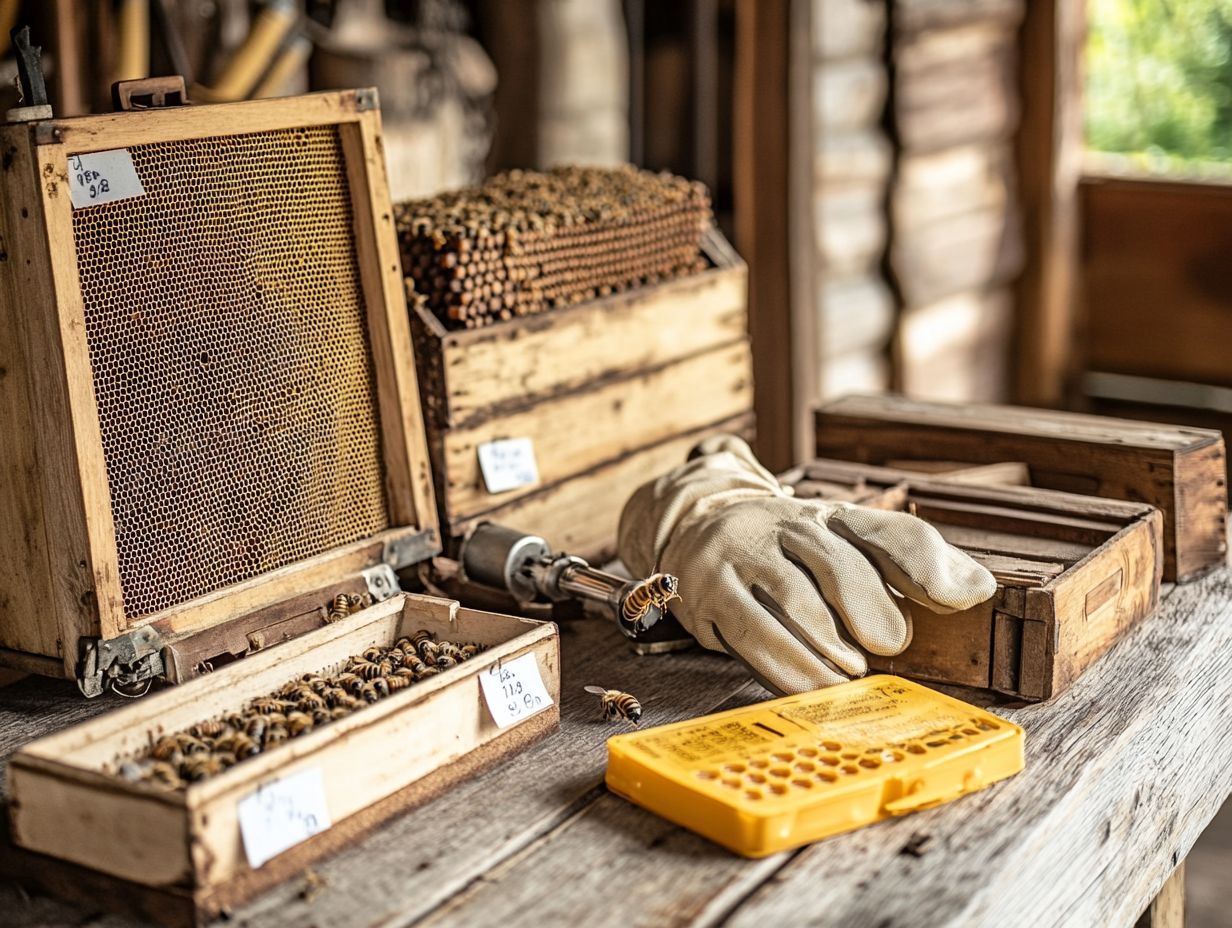
The costs associated with maintaining your beehives can vary significantly, influenced by factors such as the number of hives you manage and the practices you employ. Regular inspections are crucial for checking colony health. They may require spending on pest or disease treatments, adding to your ongoing expenses.
Also, consider the costs of seasonal maintenance tasks, such as feeding your bees or replacing frames and foundation sheets, all of which are essential for ensuring a bountiful honey crop.
Budget for these maintenance activities to keep your hives healthy and thriving! Ignoring these tasks can harm your hives and lower your honey yield! For example, mite treatments, pests that can harm bee colonies, can cost $10 to $50 per hive every few months. During lean periods, feeding supplements could be necessary, costing upwards of $20 monthly.
While these expenses are essential, they can affect the overall profitability of your honey production. By adopting a proactive approach, you can bolster your hives’ resilience and optimize honey harvests, ultimately maximizing your return on investment.
What are the Costs of Replacing Beekeeping Equipment?
The costs involved in replacing beekeeping equipment can sneak up on you over time. Tools like hive tools and smokers endure wear and tear from frequent use. It’s wise for you to budget for these replacements, which may arise unexpectedly based on how often you use the tools and the quality of the initial equipment you’ve chosen.
Regularly replacing essential tools is crucial for maintaining efficiency and ensuring the safety and health of your beekeeping operation.
Factors such as the intensity of your beekeeping activities significantly impact how often you’ll need to replace equipment. If you’re managing multiple hives or working in diverse environments, your tools may wear out faster than those of beekeepers with a less demanding routine.
Durability varies by brand and material, which can influence your long-term costs. Generally, hive tools might set you back around $10 to $30 each, while smokers can range from $25 to $100.
By understanding the relationship between usage and equipment longevity, you can make informed decisions that help minimize expenses and optimize your operations.
What Are the Benefits of Investing in Quality Beekeeping Equipment?
Investing in quality beekeeping equipment brings a wealth of benefits, including enhanced efficiency, improved safety, and greater longevity of your tools. When you choose high-quality items like sturdy hive tools and reliable smokers you ensure they can stand up to the demands of regular use, giving you confidence that your tools will perform effectively every time.
This investment enhances your overall hive management, leading to healthier colonies and, ultimately, higher honey yields.
When you rely on well-made products, you can execute tasks more seamlessly, trimming down the time spent on hive maintenance. For example, a durable hive tool allows for quick and safe hive inspections, alleviating any worries about breakage. Meanwhile, a heavy-duty smoker ensures effective bee calming, minimizing the risk of stings while you work.
Opting for equipment with safety features like gloves that provide protection without sacrificing dexterity lets you work with confidence, allowing you to focus on the health of your bees rather than potential hazards. This thoughtful selection of equipment contributes to increased productivity and satisfaction in your beekeeping endeavors, underscoring the importance of investing in quality.
What are the Potential Savings in the Long Run?
Potential savings in beekeeping can be substantial over time, especially when you consider the savings from quality equipment and efficient hive management practices. While the initial investment in premium tools may seem steep, their longevity and superior performance can significantly reduce your replacement costs in the long run.
By managing your hives effectively, you can maximize honey crop yields, ultimately boosting your profitability. Just think about it: investing in quality equipment and effective management techniques could help you quickly see a return on your investment within just a few honey harvesting seasons, setting you up for a thriving business model well into the future.
Adopting advanced tools that help you keep track of your bees’ health will help you pinpoint issues before they escalate, helping you avoid expensive treatments and potential colony losses. For example, using well-constructed stainless steel beekeeping gear enhances your honey extraction efficiency and stands up to wear and tear better than cheaper alternatives.
Frequently Asked Questions
What is the average cost of beekeeping equipment?
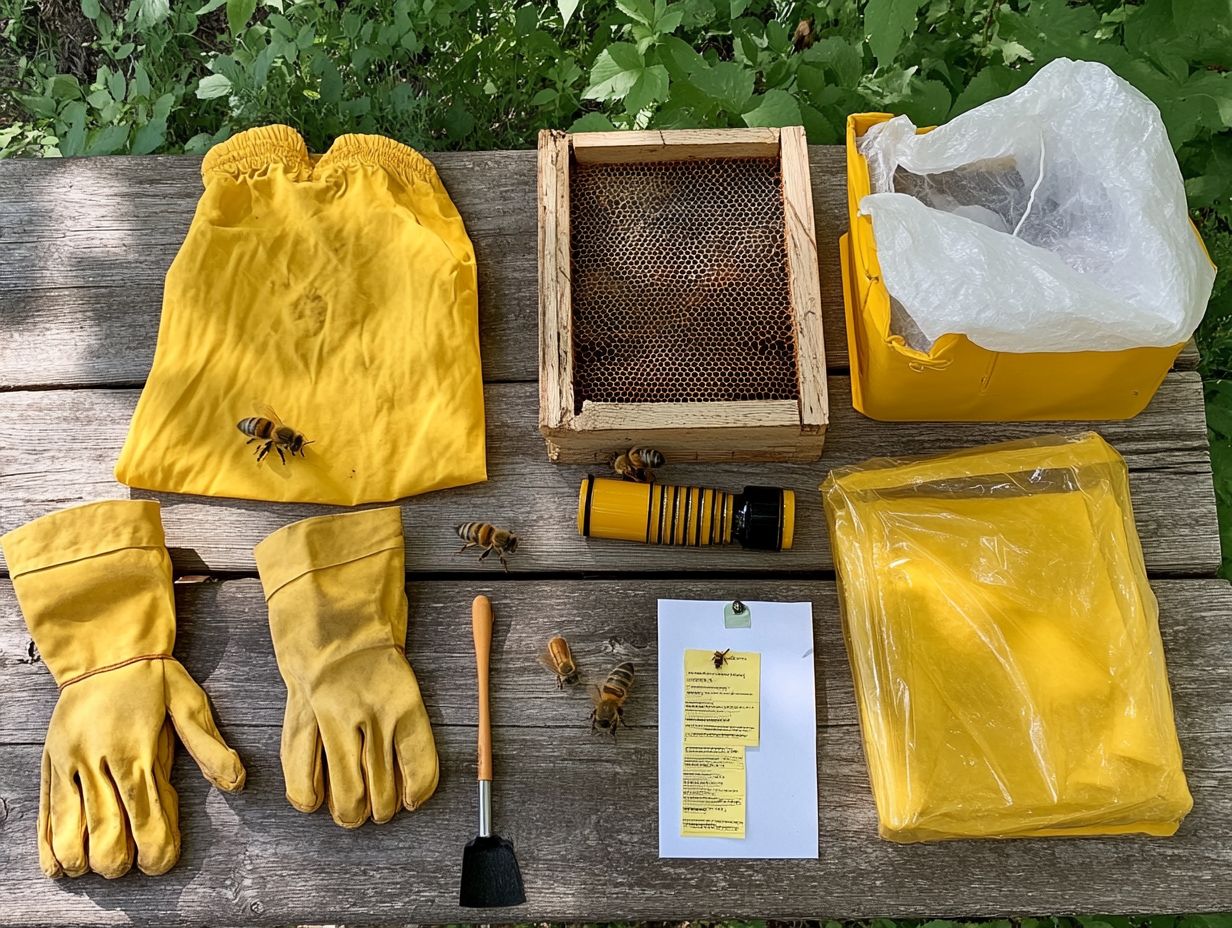
The average cost of beekeeping equipment can range from $300 to $500 for a basic starter kit. However, the cost may vary depending on the type and quality of the equipment, as well as your location.
What are the essential beekeeping equipment pieces that I need to purchase?
The essential beekeeping equipment includes a hive, frames, protective gear, smoker, and basic tools such as a hive tool and bee brush. Other optional equipment may include a honey extractor, queen excluder, and pollen trap.
Can I save money by purchasing used beekeeping equipment?
Buying used beekeeping equipment can save you money, but be sure to check it for damage. Older equipment might not work with the latest technology, leading to extra costs later.
Are there any alternative ways to reduce the cost of beekeeping equipment?
You can save on beekeeping gear by making it yourself. Joining a local beekeeping club can also provide discounts on purchases.
How often do I need to replace my beekeeping equipment?
The lifespan of your beekeeping equipment varies. Wooden hives might need replacing every 5-7 years, while protective gear can last several seasons with care.
Is beekeeping equipment a one-time investment?
Beekeeping equipment is not a one-time expense. Over time, you ll have to replace worn-out gear and budget for ongoing costs like bees, feed, and medications.

